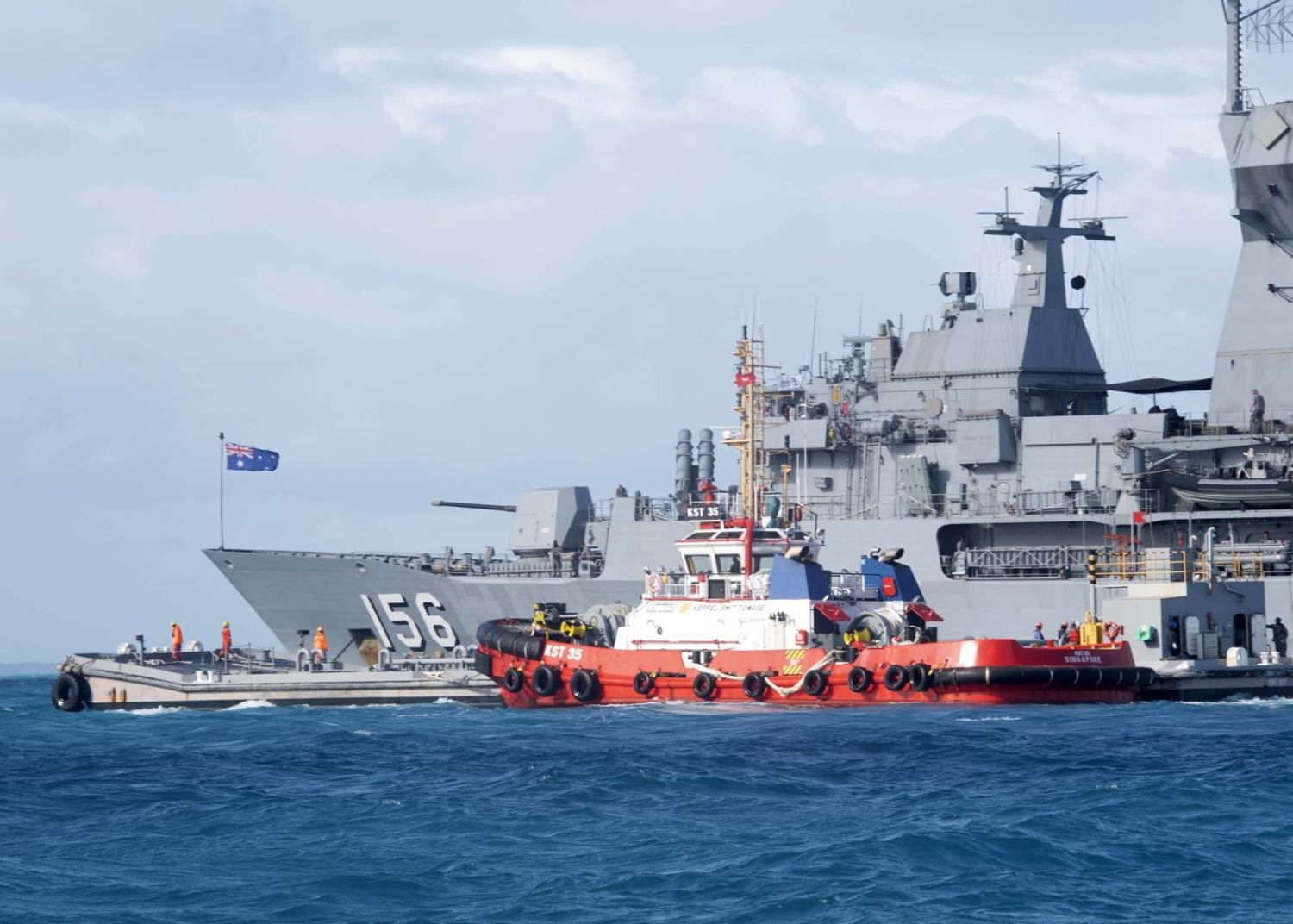China’s Navy has been accused of using sonar pulses in an incident last week that caused injuries to several Australian navy divers from HMAS Toowoomba during work to clear fishing nets from the warship’s propeller. The Australian Defence Department has said the vessel was performing operations in support of UN sanctions against North Korea in international waters off Japan when the incident occurred.
This is not the first time China’s military forces have conducted aggressive manoeuvres against the Australian military. Chinese combat aircraft have dangerously intercepted Australian maritime surveillance planes over the South China Sea, including releasing flares into the flight path, and a Chinese warship last year pointed a military grade laser at an Australian surveillance flight to the north of Australia.
What is significant about the latest incident is that for the first time, Australian military personnel have been injured because of the behaviour of China’s military.
The sonar incident is part of broader aggressive Chinese behaviour against other states exercising their legal right of passage in the air and maritime domains across the Indo-Pacific region.
In October, a Chinese combat aircraft came within five metres of a Canadian surveillance plane involved in UN sanction enforcement against North Korea. The United States released a report the same month identifying nearly 200 incidents in recent years whereby Chinese aircraft conducted unsafe manoeuvres against US aircraft, including by discharging chaff or flares.
Such aggressive behaviour from China is not new to Southeast Asian states – including Brunei, Malaysia, the Philippines, and Vietnam. Each is involved in disputes with China over maritime claims in the South China Sea. Indonesia is not a party to the South China Sea dispute, but also has an overlapping claim with China near its Natuna Islands, and has had its own stand-offs with Chinese vessels.
In recent months, China’s vessels have variously blocked, fired water canons or rammed Filipino ships on resupply missions to Filipino forces at Second Thomas Shoal, where they are stationed on board a grounded rusting warship. Malaysian and Vietnamese oil exploration efforts within their Exclusive Economic Zone have also been harassed previously by China.
The latest incident involving Australian military personnel appears to signal China’s willingness to test the red line – whether it can escape repercussions, even after causing injury, to shape the behaviour of other states through grey zone tactics.
Australia’s response to the sonar incident is important. Suppose China could get away with injuring the military personnel of a US treaty ally (Australia) without any repercussion. In that case, it may be emboldened to adopt a more aggressive posture against Southeast Asian states with which it has maritime territorial disputes. Such an environment does not augur well for maritime security and stability in the broader Indo-Pacific region.
Southeast Asian states will be closely monitoring Australia’s response to the incident.
At a minimum, a diplomatic protest note should be issued against Beijing, or China’s ambassador in Canberra should be called in to explain the incident.
While Australia seeks to establish friendly ties with China in line with the government’s claim of stabilisation, it must also signal to China that aggressive behaviour that puts Australian lives at risk is unacceptable. Canberra must learn to walk alongside and, at the same time, stand up to Beijing.

